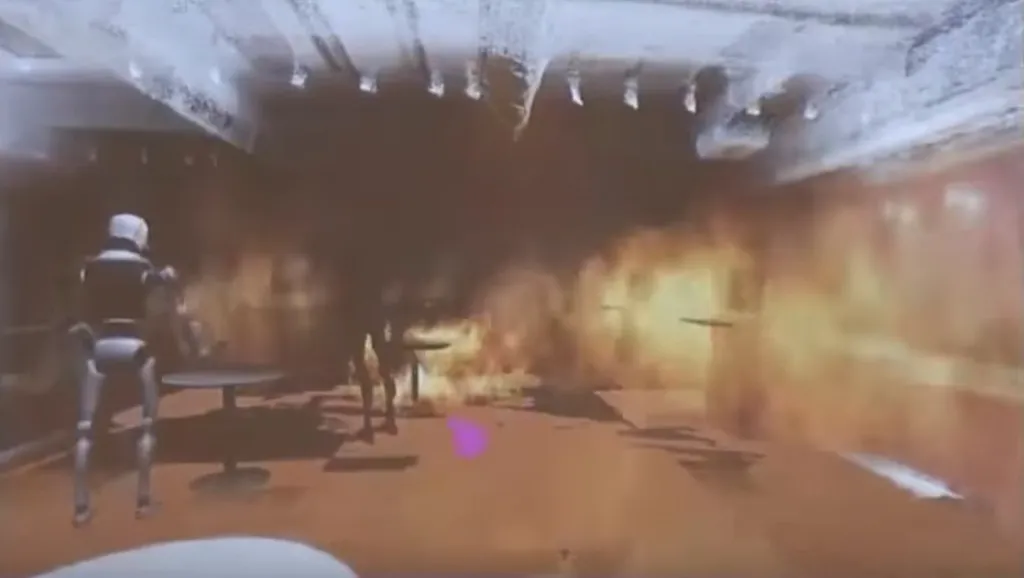Forget Room Scale VR; the Nagoya University in Japan is using ‘Building Scale VR’ for disaster training.
In a recent talk hosted by Microsoft Research (available at the bottom of this page), the University’s Katashi Nagao outlined its work with this ambitious form of VR. Using a room scanning robot that can create 3D maps of real-world environments with the help of an RGB depth camera and image data from a 4K panoramic camera, the system captures the entire innards of a building in VR and then simulates disaster situations such as earthquakes within them. The robot can even scan and navigate around objects in the room.
Using an HTC Vive connected to a backpack PC that’s capable of position tracking within the building’s multiple rooms, users are able to train for sudden and unexpected situations. The tracking relies on an outside-in solution, though it doesn’t sound like the team is currently using Valve’s new base stations. As such, the team managed to extend the tracking area using ArUco markers fitted to the Vive controllers and followed by Intel’s RealSense camera, which is also attached to the Vive, among other hacks.
It’s a roundabout way of getting bigger tracking out of the HTC Vive, but the result could help save lives in the future. Skip through to about 30 minutes into the video to see the system in action.


























